The Salon International de la Haute Horlogerie (SIHH) is a place of many sights and sounds, filled as it is with the creations of the industry’s top watchmakers and creative minds. It is easy to get lost in the halls gazing at the spectacle of luxury and craftsmanship so clearly on display for the visiting collectors, journalists, and retailers.
Over the past few years, the SIHH has placed more emphasis on education and offering unseen perspectives. The development of the auditorium, which made its debut at the 2018 SIHH, into a truly usable feature space helped bring some great content to attendees and promoted a variety of topics and events during the show.
One feature that stood out was the presentation of the F.P. Journe Young Talent Competition winner, which is in its fourth year. The competition is now put on in partnership with the Fondation de la Haute Horlogerie (FHH) and, as of 2019, The Hour Glass. It highlights the extraordinary work that young watchmakers can do while simultaneously giving those same watchmakers a chance to get their work in front of some very respected names in today’s industry.
The jury judging the submitted works comprises a variety of people, beginning with talented watchmakers Philippe Dufour, Giulio Papi, Andreas Strehler, and Marc Jenni. It also contains the secretary general of the FHH Cultural Council, Pascal Ravessoud; Michael Tay, managing director of The Hour Glass; our very own editor-in-chief, Elizabeth Doerr; and, of course, the inimitable François-Paul Journe.
With these personalities coming together to evaluate the entries by the young horologists, we are sure to be introduced to some talented work.
The purpose of this competition is not only to highlight young talents but to aid them on their route to independence. Aside from the opportunity to showcase their creations at the SIHH, the winner receives a diploma of achievement from F.P. Journe and the FHH as well as a 10,000 CHF grant from The Hour Glass to purchase tools and equipment to further his or her horological development.
This prize money, increased from that of previous years, definitely goes a long way to raising the winner’s ability to develop ideas.
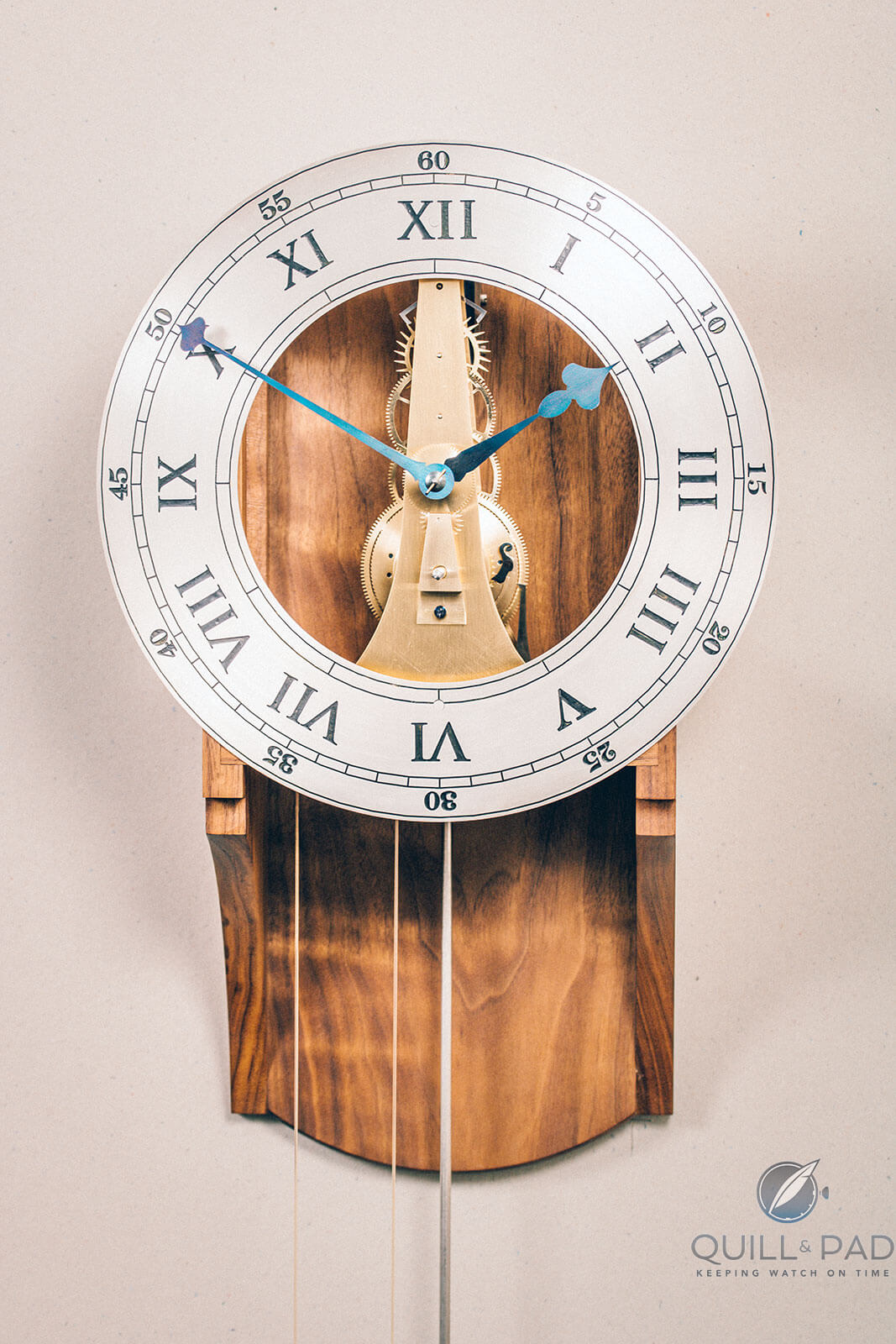
Equilibrium clock by Tyler John Davies, winner of the 2019 F. P. Journe Young Talent competition
2019 F.P. Journe Young Talent winner: Tyler John Davies’ Equilibrium
The winner of the 2019 edition of the competition is the very talented 27-year-old Tyler John Davies hailing from Birmingham, England. He is a graduate from the School of Jewelry of Birmingham University.
Davies’ submission is called Equilibrium, an eight-day weight-driven wall clock with deadbeat escapement, showcasing his passion for clock making and a desire to create something precise.
Davies began his journey in horology when he was younger, having worked in a variety of industries and finding that he enjoyed working with his hands. At 19 he began working in a clock shop, helping to restore antique clocks and developing a love for the mechanisms and movements.
After three years spent there, he decided to pursue a desire to make his own clocks, even though he had plenty of well-meaning advice to the contrary. Focused on his passion, he began his journey toward creating his own pieces.
Eventually he enrolled at Birmingham University to begin his formalized study. His final school project is the one he submitted to the competition: Equilibrium was developed around the idea of balance and, as Davies describes, it is “an expression of the balance between two or more forces.”
The clock was built over a period of about four months during a time in which he was also focused on other coursework, so the actual construction probably took about two solid months’ worth of effort.
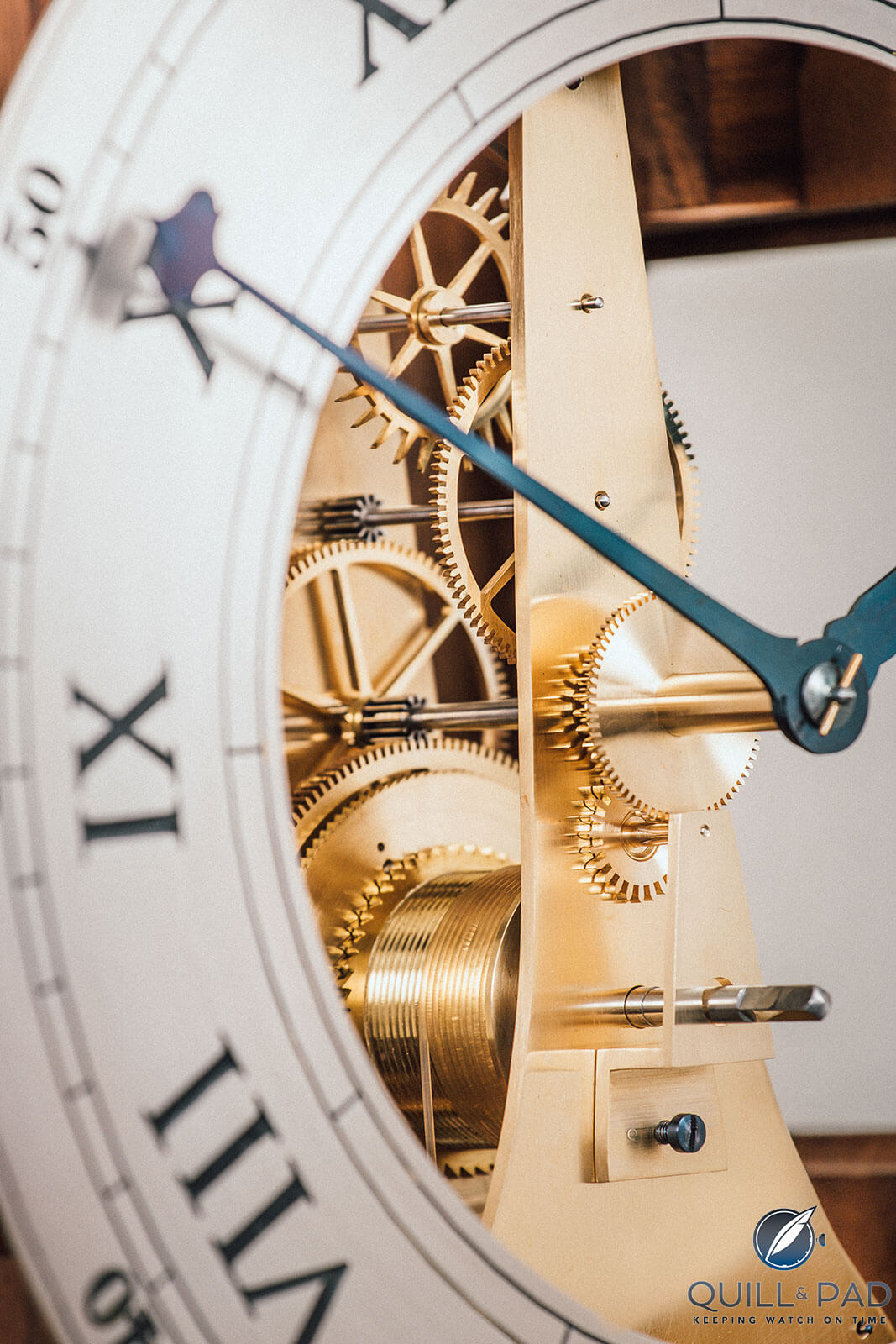
Dial detail of Tyler John Davies’s Equilibrium clock
His task was to design and fabricate a mechanical clock with a visible escapement and the option of adding a complication if so desired. And he added a few of his own requirements: a mechanism that is open and easily viewed, the use of traditional techniques and construction practices, and he wanted to make 90 percent of the components from raw material.
According to Davies, the escapement was the most challenging and satisfying part to work on. A timepiece’s escapement dictates precision as it breaks time into regular (isochronic) intervals. It is the most critical element in the movement as it is responsible for accuracy.
He has had experience making recoil escapements in the past, so he wanted to push himself and do something more difficult, knowing that the deadbeat escapement is less forgiving and requires a much more precise construction.
The escape wheel was difficult, necessitating a special cutter and careful setup to manually cut the arms, but the escape lever proved to be the real difficulty. Davies had to create his own jigs to carefully cut the precise angles required for the deadbeat lever pallet. This took a few tries before he got it just right, but the satisfaction of accomplishing that really stood out to him in the construction process.
But not everything was done completely by hand. Davies also used the project as a reason to expand his capabilities in CNC machining and engraving for various components. The black walnut case was CNC machined before being assembled and finished by hand, and the large dial was engraved using an industrial laser machine called a gravograph before being finished manually on a lathe.
Overall, the movement comprises a fairly simple gear train that was made to very high standards. The style is rather traditional, and finishing was kept simple. Davies wants to expand his finishing capabilities with each future clock so that it can match the level of craftsmanship in the mechanism.
Increasing familiarity and capabilities with more fabrication techniques is also a goal for him, though his real passion lies in the escapements.
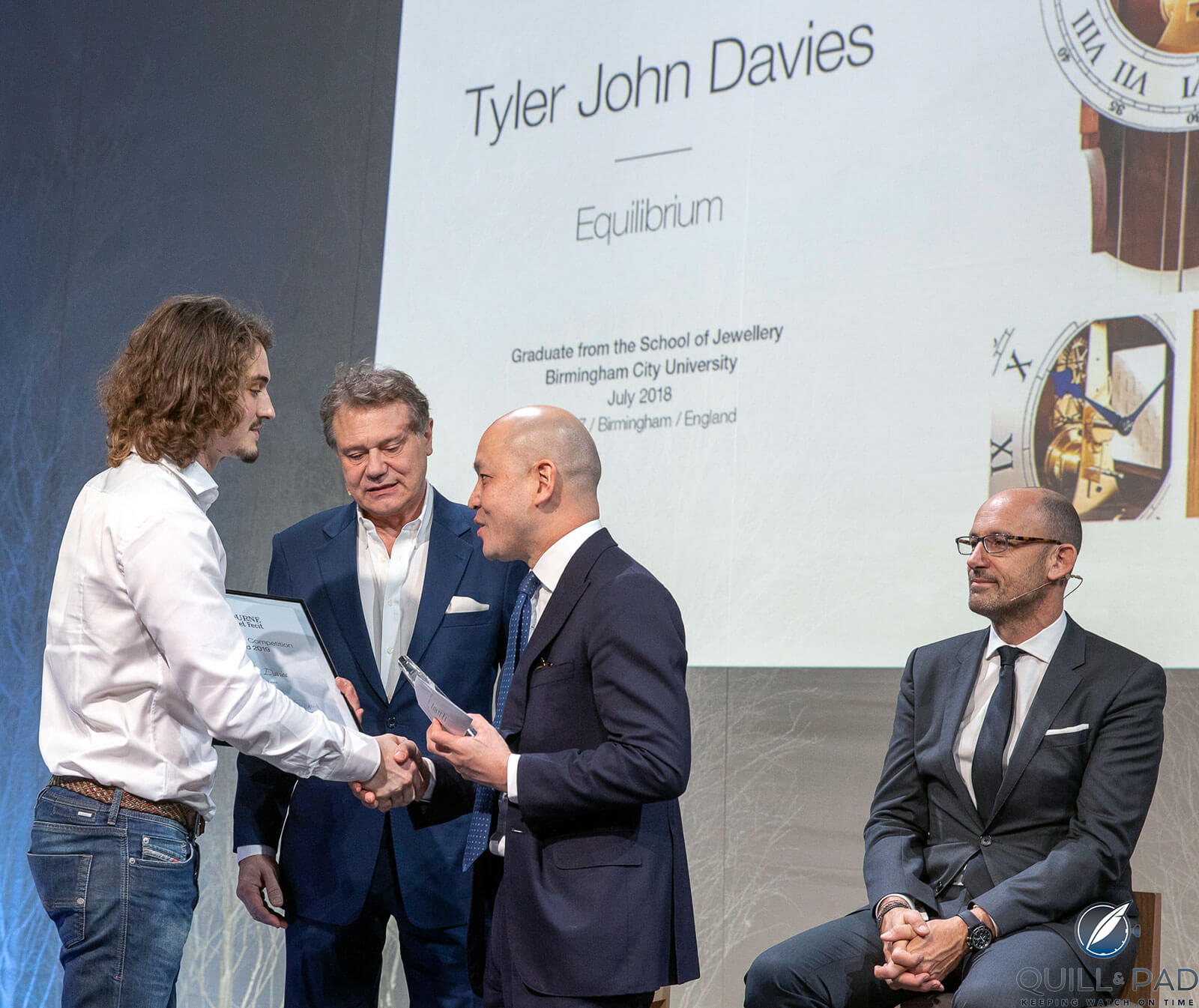
Tyler John Davies (left) receives the F.P. Journe Young Talent Competition 2019 award for his Equilibrium clock from François-Paul Journe and The Hour Glass’s Michel Tay; Pascal Ravessoud (FHH) looks on
Tyler John Davies’ future
Davies already has a business working on clock restoration and hopes to expand it by building one clock per year in between restoration work. The goal is to develop more complicated escapements with each clock, gradually pushing himself to grow as a clockmaker and build a portfolio.
He also wants to vary the style with each clock, allowing him to explore the many ideas he has for future pieces. Ideally, this could lead to bespoke projects from clients wishing to create something to represent their own taste, a business structure inspired in part by Struthers Watchmakers, a Birmingham institution.
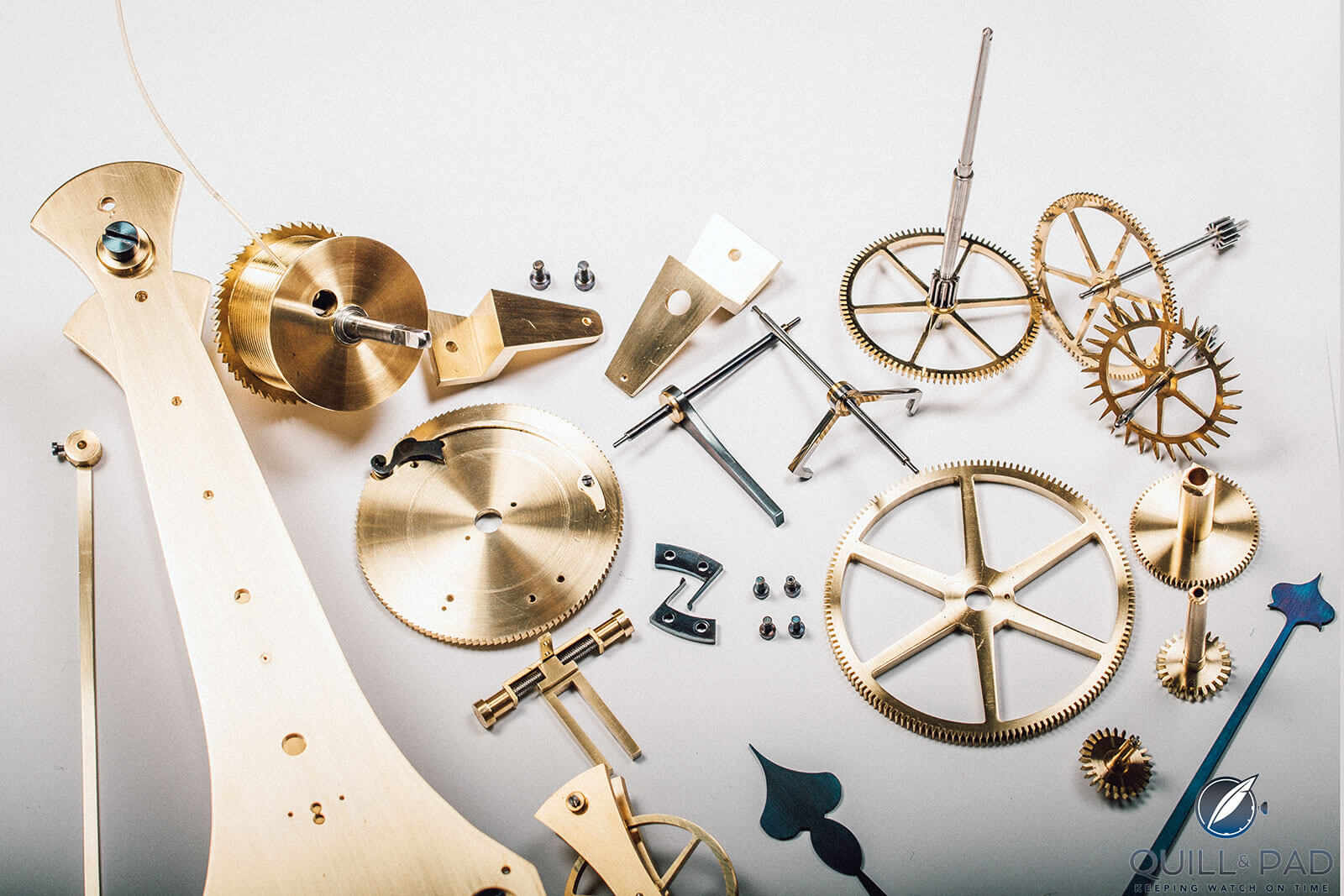
Just a few of the components in Tyler John Davies’s Equilibrium clock
Davies clearly has a vision for what he wants to accomplish and given his success with the Equilibrium clock and winning this competition, that future looks to be a very likely path.
And that is precisely why this competition exists: Journe himself knows how hard it is to get to a point where a talented individual can build a business around his or her own creativity, let alone have the capacity to create unique ideas. The prize has always been intended as a boost to young watchmakers that have talent but may not have an avenue to truly pursue what they desire.
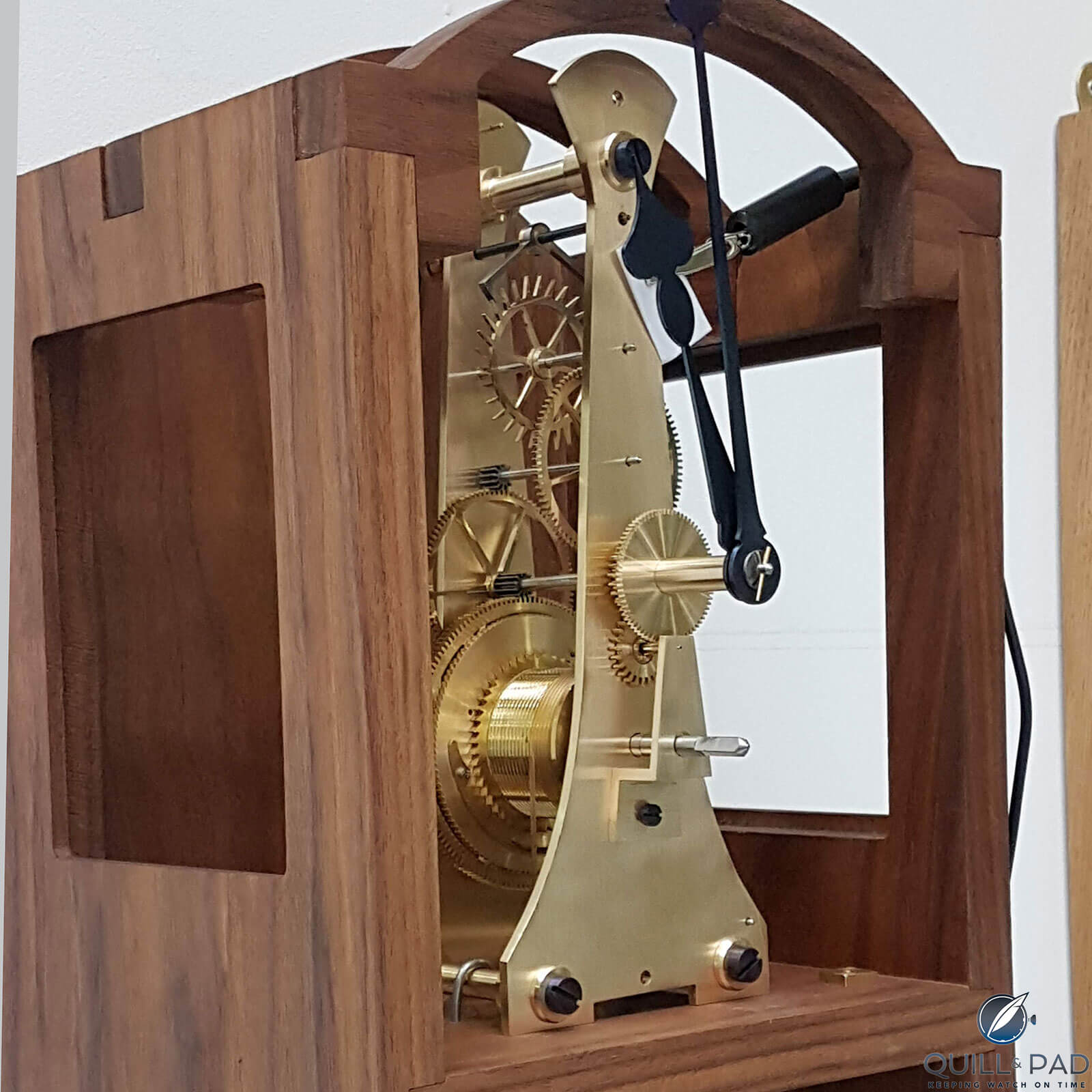
Back of the Equilibrium clock by Tyler John Davies
Focusing on antique clock restoration and building bespoke clocks, especially in the UK, sounds like a very plausible career path, and with the bonus of the 10,000 CHF grant from The Hour Glass the road becomes much easier to travel. In an age where many struggle to find any paths they genuinely enjoy, being where Davies is at this point in his life demonstrates that talent and creativity just need to be matched with the right opportunities.
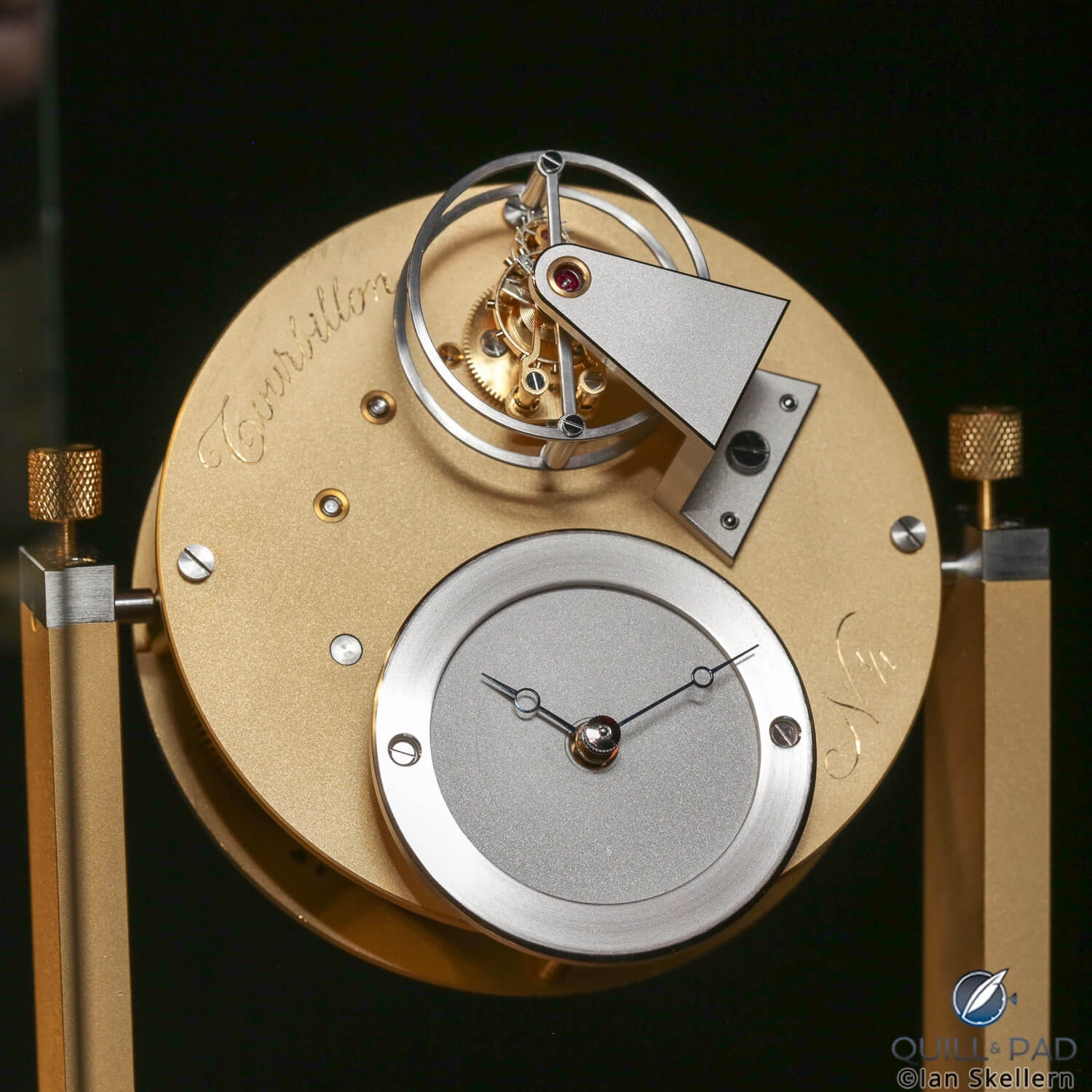
Mechanica Tempus Pendulette Tourbillon by Rémy Cools
One of the 2018’s winners, Rémy Cools, has already begun plans for his own watch brand and is busy creating pieces to launch his own future. Other past winners have gone on to work for various brands, clearly exemplifying the talent and passion that this competition attracts.
The competition’s new partnership with The Hour Glass looks to boost support and exposure for the winners as well, turning it into something that is almost guaranteed to become a launching pad for many young horologists.
The F.P. Journe Young Talent Competition, previously a feature of Baselworld in conjunction with the AHCI, is sure to become a highlight of the SIHH should the relationship continue. The recent changes to both fairs, including the shift for 2020 to reconnect the dates of the two shows, may change exactly when and where it is held, but the result, I am sure, will be the same.
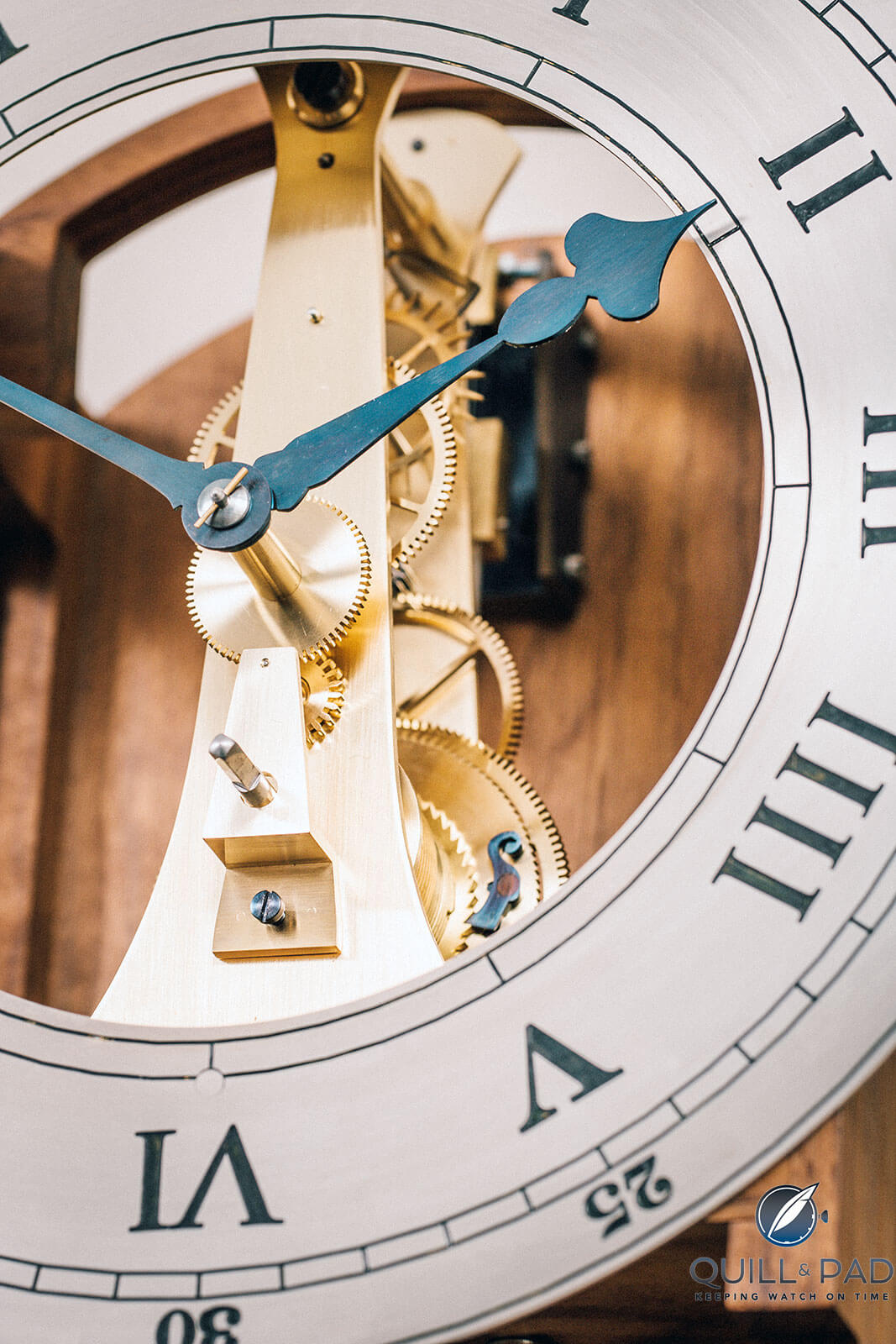
Dial detail of Tyler John Davies’s Equilibrium clock
I extend my congratulations again to this year’s winner, Tyler John Davies, and wish him the best of luck with his future plans!
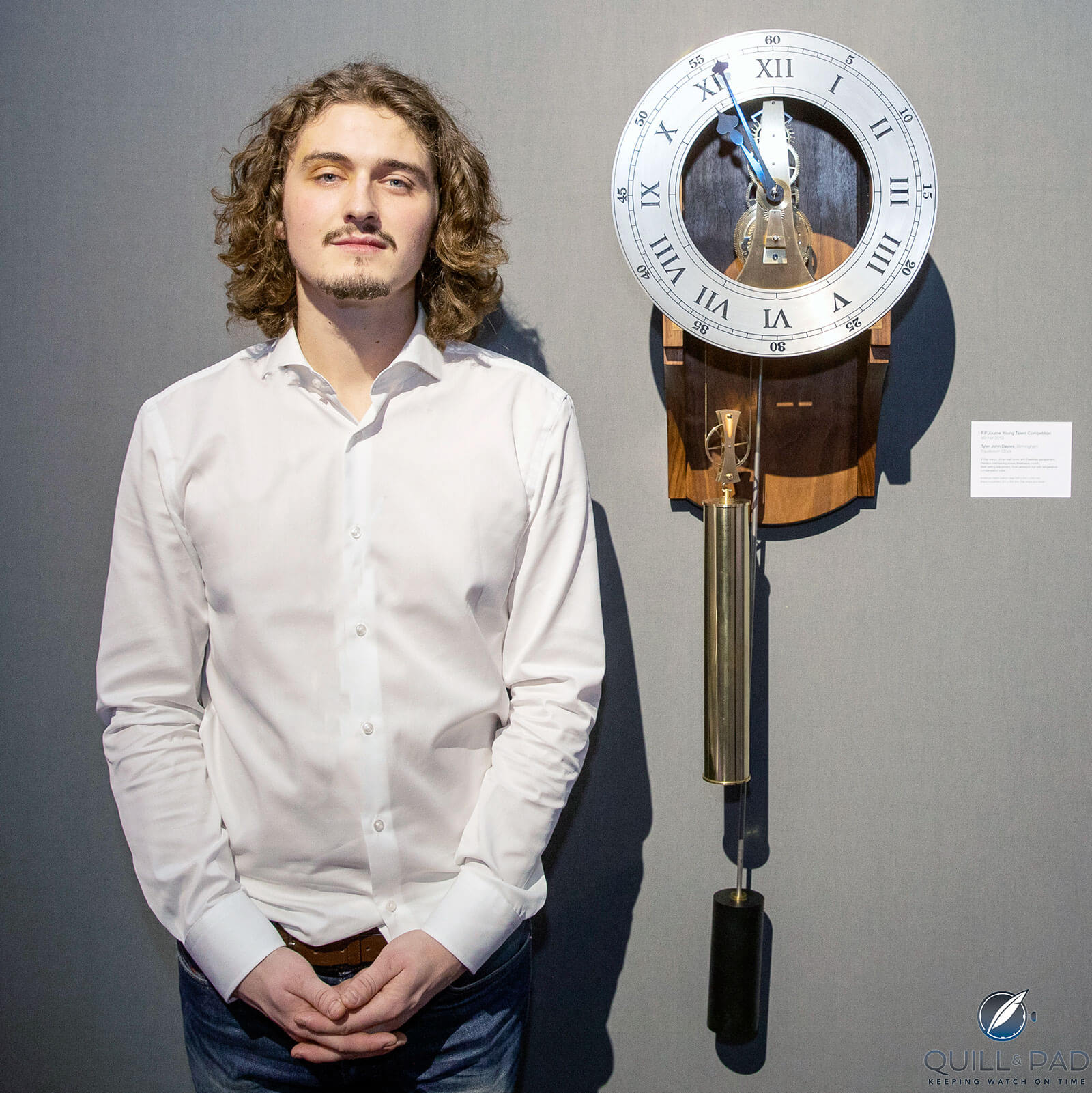
Tyler John Davies and his Equilibrium clock, winner of the 2019 F. P. Journe Young Talent competition
For more information, please visit www.fpjourne.com/en/event/events/young-talent-competition.
Quick Facts Tyler John Davies Equilibrium
Case: 585 x 200 x 200 mm, American black walnut
Movement: 8-day weight-driven pendulum clock with deadbeat escapement, Harrison maintaining power, breakaway crutch, beat setting adjustment, invar pendulum rod with temperature compensation tube
Functions: hours, minutes
Limitation: unique piece school clock
You may also enjoy:
Rick Hale: Wooden Clocks Designed And Built As If By John Harrison Except Today And In The USA
Meet The Struthers: English Watchmaking The Old-Fashioned Way . . . Sort Of
How And Why To Build A Clock: Gato Long Clock By Dilip Sivaraman, AHCI Young Talent Finalist 2016





















































Leave a Reply
Want to join the discussion?Feel free to contribute!